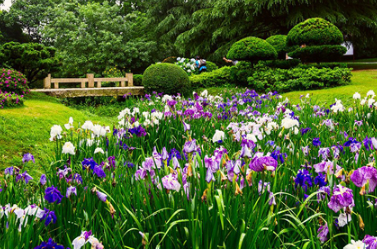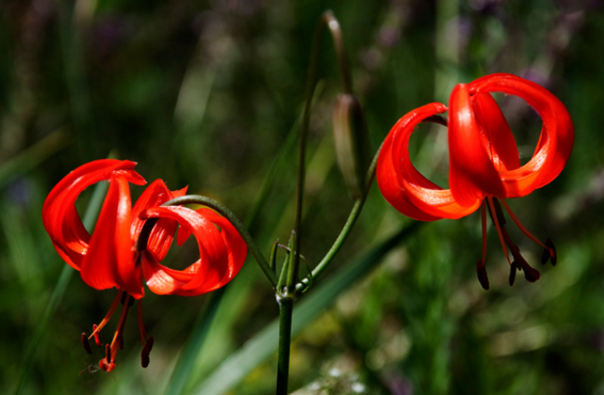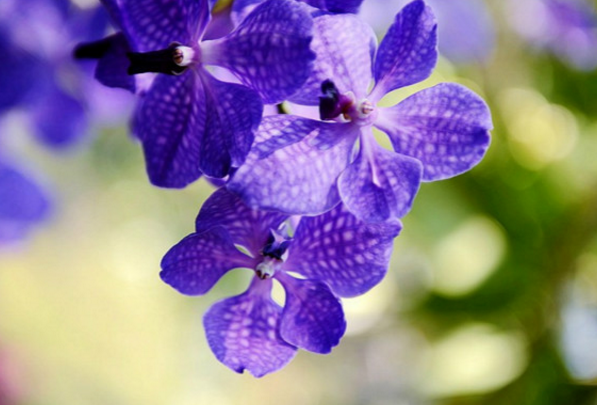The difference between the daily maintenance methods of Acorus calamus and Acorus calamus
Acorus calamus is an aquatic flower with persistent roots, and its stem can reach more than 15cm. This paper introduces the breeding methods of Acorus calamus, so that more people can understand it.

Detailed explanation of daily maintenance methods of Acorus calamus
1. Cultivation methods of Acorus calamus
Usually we see two kinds of calamus, one is planted in the water, the other is in the soil above the surface of the water. Under normal circumstances, the flower calamus in the soil is not as good as the calamus in the water, and the cultivation is usually carried out in the wetland.
Acorus calamus likes a humid environment, the growth of a large demand for water, the planting process to ensure adequate light, light time controlled in more than 6 hours; sufficient air humidity and soil moisture, timely fertilization.
2. Propagation and maintenance of Acorus calamus
The propagation of Acorus calamus can be divided into three ways: sowing, ramet and tissue culture.
Sowing is mainly carried out in the spring and autumn season. Ramet can be carried out in spring, autumn and after flowering, and tissue culture can be carried out at any time. Today, with the development of science and technology, shoulder lateral buds, leaves, stem tips, after disinfection, differentiation culture, so that a large number of plants can be cultivated.
3. Maintenance and management of Acorus calamus
Watering and fertilizing:
Acorus calamus needs proper watering and fertilization, pot plant management should be more detailed, fertilization should not be too thick, so as not to burn roots. The management of planting plants in the land is relatively extensive, and fertilizer can be applied once in spring and after flowering.
Trim:
After flowering, diseased leaves, residual roots and flower stems should be cut off in time. When transplanting in a different pot, cut off the leaves of the upper part of the plant and leave 20cm for transplanting. For some introduced varieties, soak the roots with rooting agent before planting.
Weeding:
After the calamus is planted, many weeds will grow around it, so it is necessary to loosen the soil and weed in time. Weeding when the soil is drier. Pull it out manually.
The difference between calamus and calamus
Acorus calamus
Acorus calamus is a perennial aquatic flower with persistent roots, which belongs to Iridaceae.
The shape of Acorus calamus, its stem is thick and short and cylindrical, with many whisker roots. Its leaves are linear, there are protruding veins in the middle, and the veins on both sides are relatively flat. Its flowers are very large, the three petals of the outer wheel of the flower are oval to Obovate, and the middle part of the flower has yellow spots and purple texture. The color of the flowers changes from white to dark purple, and the spots and patterns change greatly.
The florescence of Acorus calamus is usually between June and July.
Acorus calamus likes humid and warm environment and needs fertile and moist soil. Most of them grow in swamps or wet riverbanks.
Acorus calamus
Acorus calamus is a perennial plant, its shape, stem stout, horizontal growth, will branch appearance is yellowish brown. Its leaves are sword-shaped, with veins protruding in the middle.
The color of calamus is green and bright. Its flowers are yellowish green and bloom from June to September in late summer and early autumn for four months.
Calamus likes to grow on swamps or floating islands in lakes. It likes a warm and humid climate and sneaks its stems into the soil in winter.
Detailed explanation of daily maintenance methods of Acorus calamus
Cultivation methods of Acorus calamus
Usually we see two kinds of calamus, one is planted in the water, the other is in the soil above the surface of the water. Under normal circumstances, the flower calamus in the soil is not as good as the calamus in the water, and the cultivation is usually carried out in the wetland.
Acorus calamus likes a humid environment, the growth of a large demand for water, the planting process to ensure adequate light, light time controlled in more than 6 hours; sufficient air humidity and soil moisture, timely fertilization.
Propagation and maintenance of Acorus calamus
The propagation of Acorus calamus can be divided into three ways: sowing, ramet and tissue culture.
Sowing is mainly carried out in the spring and autumn season. Ramet can be carried out in spring, autumn and after flowering, and tissue culture can be carried out at any time. Today, with the development of science and technology, shoulder lateral buds, leaves, stem tips, after disinfection, differentiation culture, so that a large number of plants can be cultivated.
Maintenance and management of Acorus calamus
Watering and fertilizing
Acorus calamus needs proper watering and fertilization, pot plant management should be more detailed, fertilization should not be too thick, so as not to burn roots. The management of planting plants in the land is relatively extensive, and fertilizer can be applied once in spring and after flowering.
Pruning
After flowering, diseased leaves, residual roots and flower stems should be cut off in time. When transplanting in a different pot, cut off the leaves of the upper part of the plant and leave 20cm for transplanting. For some introduced varieties, soak the roots with rooting agent before planting.
Weed
After the calamus is planted, many weeds will grow around it, so it is necessary to loosen the soil and weed in time. Weeding when the soil is drier. Pull it out manually.
- Prev

The efficacy and function of Radix Salviae Miltiorrhizae how to raise it after flower fade
Shandan flowers, also known as mountain lilies, are quietly blooming flowers in the uninhabited corners of the Saiwai plateau. At the turn of spring and summer, Shandan flowers stretch her slender waist, showing a smiling face. Although few people appreciate it, it is still glowing. It's not narcissism, it's that you don't know Sundanhua yet.
- Next

The difference between the key points of maintenance of Wandai orchid and that of Qiandai orchid
Wandailan, which originated in India, refers to orchids hanging from trees. As the national flower of Singapore, it is rich in varieties and is a rare strong member of the orchid family. When it blossoms, the flower shape is strong and unrestrained. Wandailan maintenance points Wandailan maintenance need what to bask in the sun, the smell of sunlight will make it grow very strong
Related
- Fuxing push coffee new agricultural production and marketing class: lack of small-scale processing plants
- Jujube rice field leisure farm deep ploughing Yilan for five years to create a space for organic food and play
- Nongyu Farm-A trial of organic papaya for brave women with advanced technology
- Four points for attention in the prevention and control of diseases and insect pests of edible fungi
- How to add nutrient solution to Edible Fungi
- Is there any good way to control edible fungus mites?
- Open Inoculation Technology of Edible Fungi
- Is there any clever way to use fertilizer for edible fungus in winter?
- What agents are used to kill the pathogens of edible fungi in the mushroom shed?
- Rapid drying of Edible Fungi

